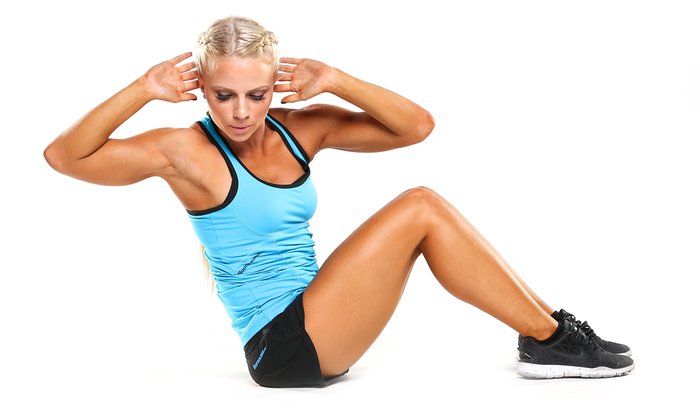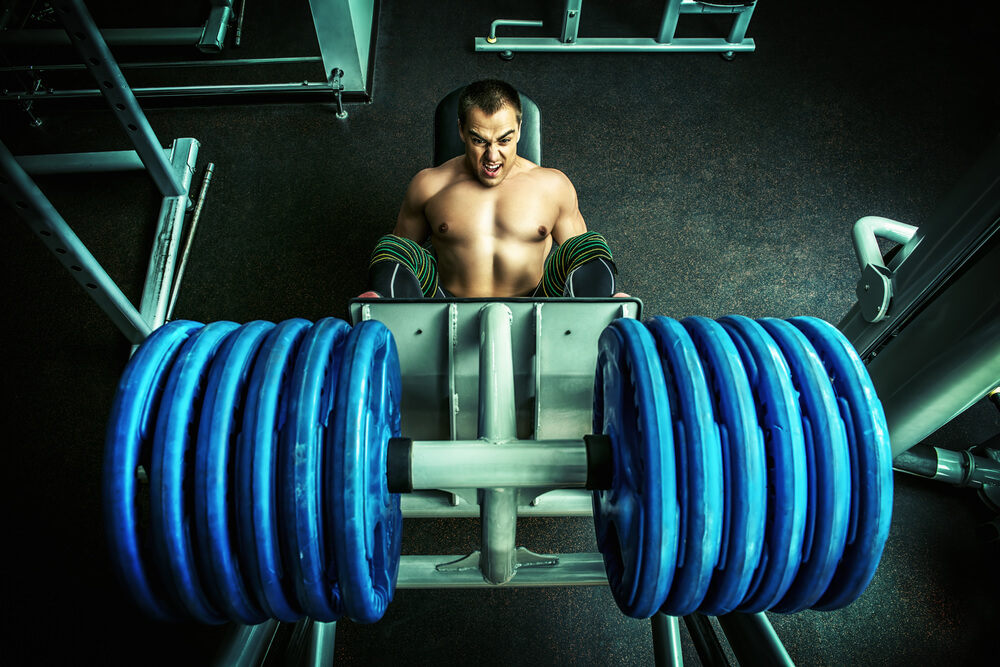Nothing goes viral faster than a picture of some lean body with a perfectly sculpted six-pack, but do you really know what goes into creating that irresistible click-bait group of muscles? Does it come down to having the right diet? Is it all about the training? Is there some perfect combination of diet and workout to get your abs rippling?
The truth is, there are lots of misunderstandings about how to get the perfect midsection. Here are seven of the most-common ab assertions—and verdicts on whether those assertions are true or false.
1. You must train your abs every day—or at least every other day—to stimulate them
False: Many of your other muscle group workouts indirectly involve your midsection, so you won’t need to train your abs that often. Exercises such as squatting, deadlifting, and standing military presses rely on your core for stabilization, so with every rep you’re also getting an ab workout.[1]
Like any other muscle group, your abs need time to recover from workouts. Target them every day, and you won’t see the growth you expect. You should still train them directly, ideally twice a week, using exercises that target the internal and external obliques and rectus abdominis muscles. Be sure to do some training that targets the erector spinae and serratus muscles, since the lower back is part of your core as well.

2. Training abs will decrease body fat, specifically around your midsection
False: Every day, millions of people around the world do hundreds of crunches under the false impression that this will spot-reduce the body fat around their waists. Spot reduction of body fat is a fallacy—no matter where you try to do it. You lose body fat around your midsection by losing it all over your body, not in one specific place. Core training is important to overall functional strength, and lack of it can cause problems with your posture.[2] Just don’t think it will shrink your waist.
3. You need to be at about 10 percent body fat to see your abs
True: No matter how many ab exercises you do, you’ll never see the results of your hard work if your midsection is covered by a layer of visceral body fat, the gel-like fat stored underneath your belly fat. How lean you have to get to see your ab muscles depends to a certain degree on both your physiology and your genetics.[3] Body fat is distributed differently from person to person. Just because a friend or family member might have a body-fat percentage similar to yours doesn’t mean your abs will show as much or as little as theirs. But in general, you need to be at or around 10 percent body fat for those ripples to be revealed in all their glory.[4]

4. Having abs in an indication of being healthy
True and False: Having a lean, defined midsection does say something about someone’s dedication to a gym and diet. On the other hand, there’s more than one person who got a six-pack through a combination of not enough calories and too much cardio.
A six-pack indicates a combination of two things: strong abdominal muscles and low body fat. The trick is to find a healthy balance between the two. Your goal should be functional fitness, not chiseled abs. If you reach the first goal, you might reach the second, but you don’t need a six-pack to be healthy.
5. Anyone can develop a six-pack
True: Ever hear someone says they were "born" to have a flat midsection? As a trainer, I hear it all the time. Most people don’t have the dedication to have rip-worthy abs, but that doesn’t mean they can’t develop that dedication. In truth, anyone who can consistently work hard and eat clean can develop a defined midsection. Exactly how those abs will look varies from person to person, though. Thanks to genetics, some people have six-packs, while others have eight-packs, ten-packs, or even four-packs.
6. Training your midsection will make your waist smaller
True and False: With the right nutrition, you can definitely obtain a smaller midsection, and less body fat around your midsection does make your waist smaller. But if you already have little body fat, training your midsection—especially with weights—will not make it smaller. In fact, it could make it bigger.
Your midsection is like any other muscle group in your body. By weightlifting or performing any type of strength and conditioning program, you’re training your ab muscles to get bigger, stronger, or both, which can thicken your midsection. This is especially true if you do lots of exercises to develop your oblique muscles.

7. Wearing a waist trainer will make your midsection smaller
False: You notice that your favorite competitor wears a waist trainer, and figure that if it works for them, it’ll work for you. Yes, but…the competitors who wear these are already on strict nutritional and exercises regimens; their small waists are the result of hard work, not magical accessories.
Even though more and more competitors wear and promote waist trainers, there’s no evidence this kind of "gym wear" decreases the size of your midsection. Of course, when you put them on they can make your waist appear to be slimmer, but that’s about it.
Waist trimmer belts can increase and retain midsection body temperature during workouts, which may help you drop some water weight from that specific region, but only for a fleetingly short time and the amount you drop is insignificant. And if you rely on waist trainers and not ab exercises to slim down, you can end up with weaker core muscles. As with so many other miracle cures, waist trainers claim much more than they deliver.






Leave a Reply
You must be logged in to post a comment.